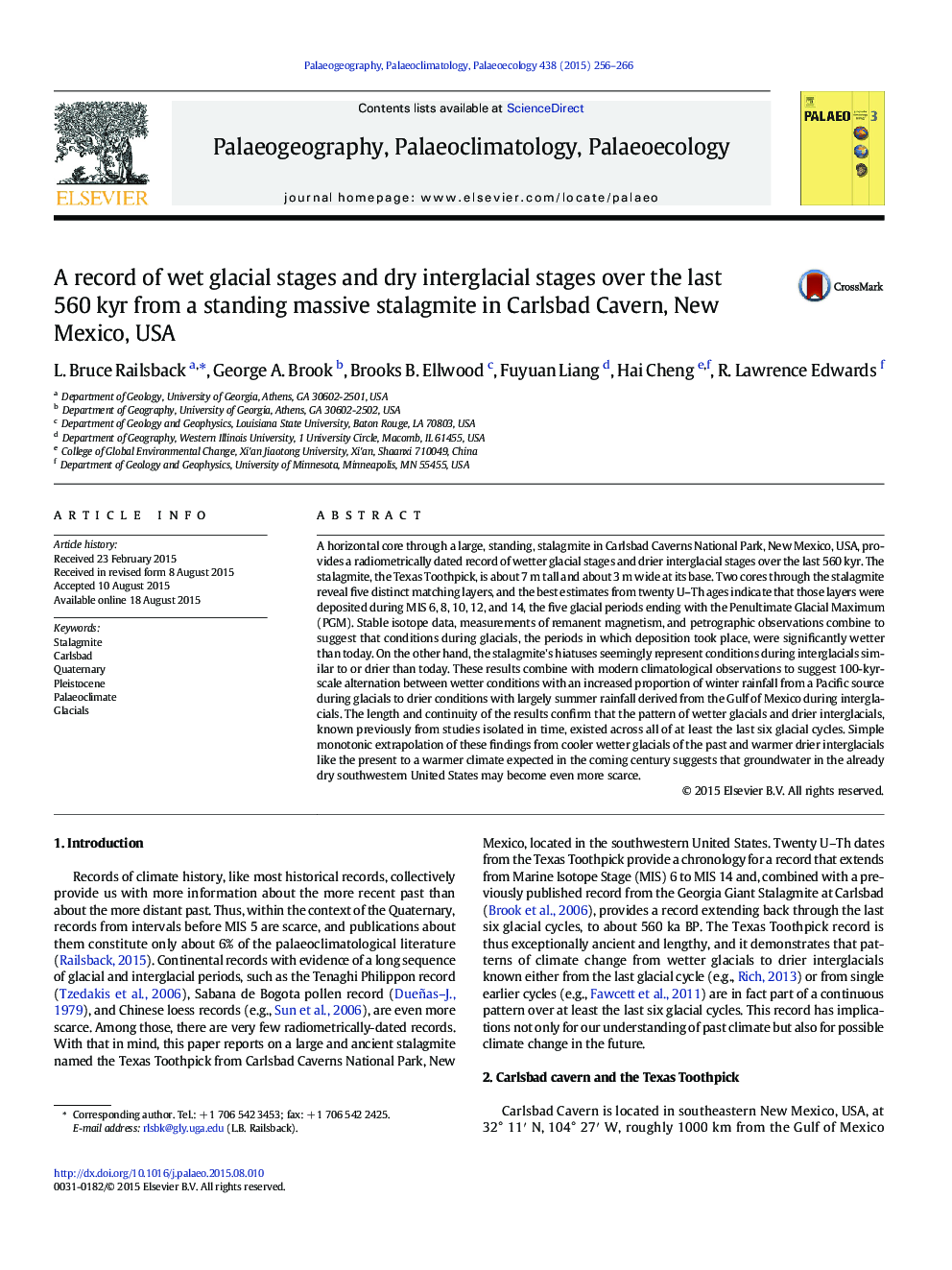| کد مقاله | کد نشریه | سال انتشار | مقاله انگلیسی | نسخه تمام متن |
|---|---|---|---|---|
| 6349635 | 1622152 | 2015 | 11 صفحه PDF | دانلود رایگان |
عنوان انگلیسی مقاله ISI
A record of wet glacial stages and dry interglacial stages over the last 560Â kyr from a standing massive stalagmite in Carlsbad Cavern, New Mexico, USA
دانلود مقاله + سفارش ترجمه
دانلود مقاله ISI انگلیسی
رایگان برای ایرانیان
کلمات کلیدی
موضوعات مرتبط
مهندسی و علوم پایه
علوم زمین و سیارات
فرآیندهای سطح زمین
پیش نمایش صفحه اول مقاله

چکیده انگلیسی
A horizontal core through a large, standing, stalagmite in Carlsbad Caverns National Park, New Mexico, USA, provides a radiometrically dated record of wetter glacial stages and drier interglacial stages over the last 560Â kyr. The stalagmite, the Texas Toothpick, is about 7Â m tall and about 3Â m wide at its base. Two cores through the stalagmite reveal five distinct matching layers, and the best estimates from twenty U-Th ages indicate that those layers were deposited during MIS 6, 8, 10, 12, and 14, the five glacial periods ending with the Penultimate Glacial Maximum (PGM). Stable isotope data, measurements of remanent magnetism, and petrographic observations combine to suggest that conditions during glacials, the periods in which deposition took place, were significantly wetter than today. On the other hand, the stalagmite's hiatuses seemingly represent conditions during interglacials similar to or drier than today. These results combine with modern climatological observations to suggest 100-kyr-scale alternation between wetter conditions with an increased proportion of winter rainfall from a Pacific source during glacials to drier conditions with largely summer rainfall derived from the Gulf of Mexico during interglacials. The length and continuity of the results confirm that the pattern of wetter glacials and drier interglacials, known previously from studies isolated in time, existed across all of at least the last six glacial cycles. Simple monotonic extrapolation of these findings from cooler wetter glacials of the past and warmer drier interglacials like the present to a warmer climate expected in the coming century suggests that groundwater in the already dry southwestern United States may become even more scarce.
ناشر
Database: Elsevier - ScienceDirect (ساینس دایرکت)
Journal: Palaeogeography, Palaeoclimatology, Palaeoecology - Volume 438, 15 November 2015, Pages 256-266
Journal: Palaeogeography, Palaeoclimatology, Palaeoecology - Volume 438, 15 November 2015, Pages 256-266
نویسندگان
L. Bruce Railsback, George A. Brook, Brooks B. Ellwood, Fuyuan Liang, Hai Cheng, R. Lawrence Edwards,